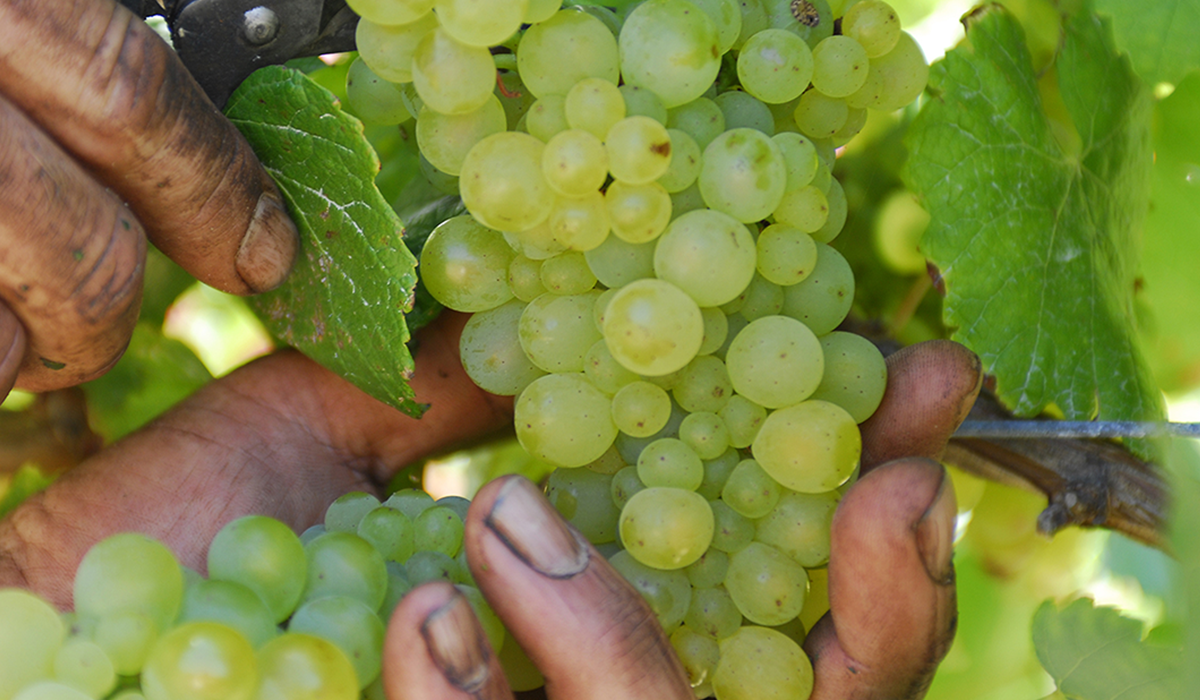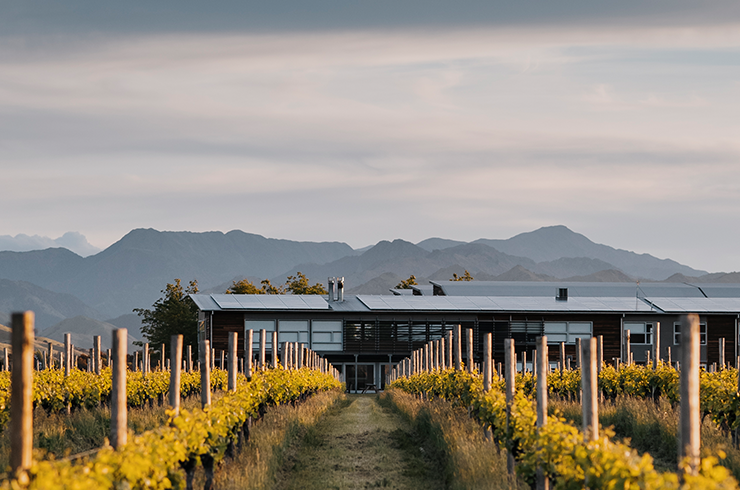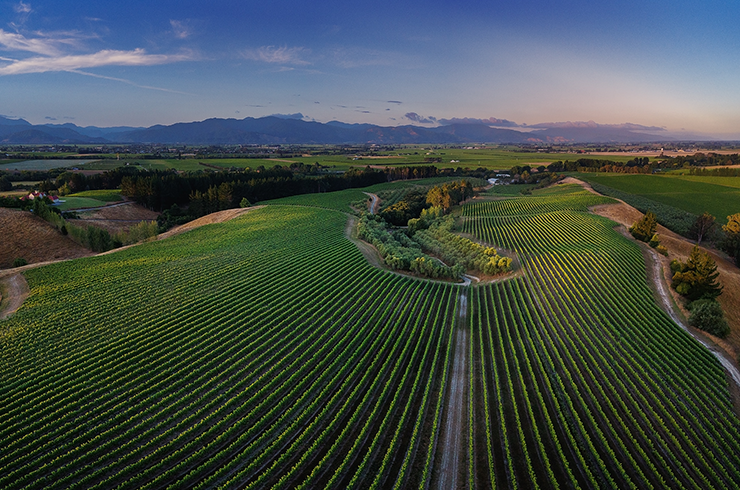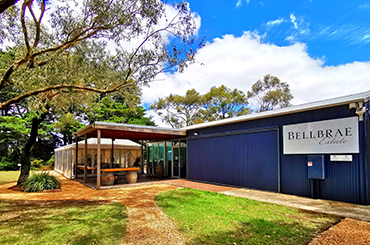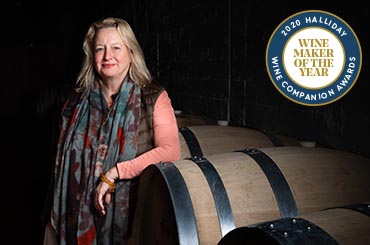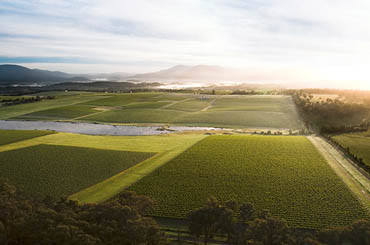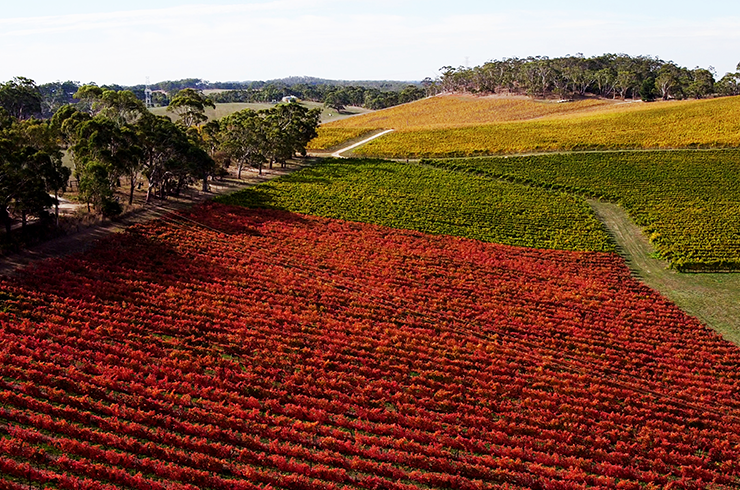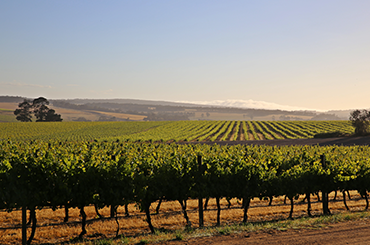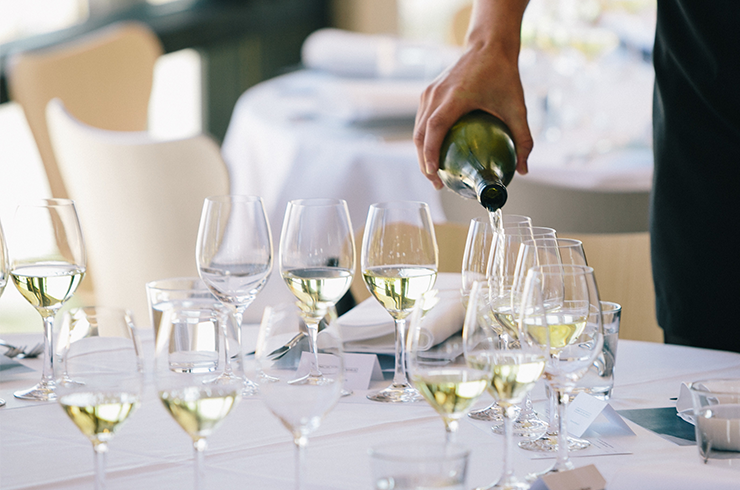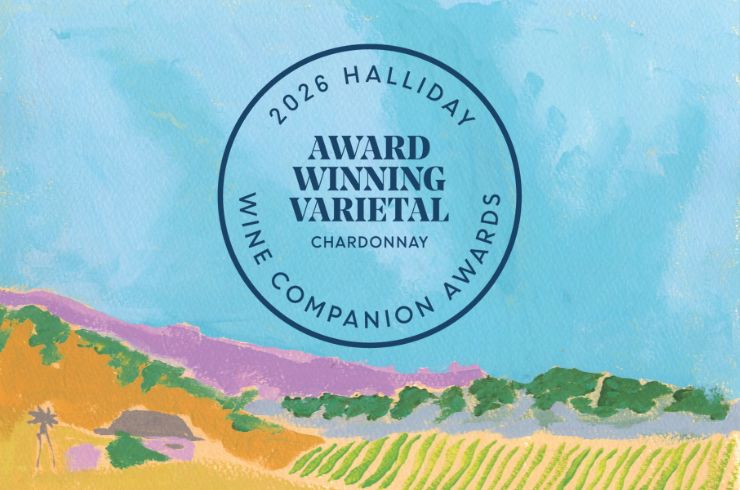Go to section: Chardonnay tasting characteristics | Origins of chardonnay | How to pair food with chardonnay | Serving temperature for chardonnay | The best Australian chardonnay regions
Chardonnay is the most popular white wine in the world. Chardonnay originated in Burgundy, and is one of the most diverse and widely planted white grapes. Today it is grown everywhere from Argentina to Australia, South Africa and Germany. Learn more about the white wine ahead.
Chardonnay tasting characteristics
For a long time, the reputation of Australian chardonnay was mired by the butter-yellow, toffee-scented chardonnays produced in the 1970s and 1980s. Now, more appropriate environments and less heavy-handed winemaking have created examples that are lighter and more restrained.There are two primary styles of chardonnay, and fans tend to prefer one or the other. There is the classic rich, buttery, oak-influenced style, and the one that is lean, citrusy and fresh. In Australian chardonnay today, more wines have found a middle ground, offering the best of both worlds.
Origins of chardonnay
A native of Burgundy in France, chardonnay has flourished in the Australian wine industry. James Busby brought the first cuttings to Australia in the 1830s, but it took more than a century until the variety grew to prominence. Initially, the production of Australian chardonnay was limited to a smaller scale and the domestic market largely consumed the wines produced.Cue the 1980s, and robust Australian chardonnay began to flex its muscles. International wine lovers soon began devouring these rich, ripe and buttery styles. As the next decade-and-a-half rolled around, however, winemakers and viticulturists recognised that public tastes were changing, with the demand for crisper white wines growing. This threat to the traditional style of chardonnay was emphasised by the emergence of New Zealand’s Marlborough sauvignon blanc; a zesty, high-acid alternative to chardonnay’s fruit-filled oak flavours.
Australian winemakers began to look for new avenues of producing chardonnay – not an impossible task given chardonnay is a variety that readily submits to the whims of its makers. Thus, the current style of Australian chardonnay, considered among the best in the world, was born.
How to pair food with chardonnay
Given its many guises, the world is your figurative oyster when it comes to chardonnay and food. A young, unoaked, cool-climate chardonnay is the perfect match to delicate dishes such as steamed fish and grilled chicken. It also works with fattier dishes like pasta with cream sauce or seafood chowder. When pairing this style of chardonnay with cheese, look to comté or gruyere. As the oak and fruit flavours in a chardonnay increase, one of the ultimate food matches is roast chicken.Chardonnay with heavy oak can be enjoyed with the richest of dishes: pork belly with crackling, salads with creamy dressings, and buttery and cheese-laden risottos.
Serving temperature for chardonnay
The ideal serving temperature for chardonnay is 11–12 degrees.Sign up to view these tasting notes and ratings
By becoming a member of Wine Companion, you'll have access to the largest database of wines in Australia.
The best Australian chardonnay regions
Chardonnay is planted in almost every wine-producing region in Australia. Its versatility is such that James Halliday says chardonnay is: “The most malleable and compliant of all the great white wine grapes, giving the impression it would even grow up a telegraph pole in the centre of Sydney or Melbourne and produce a more than half-decent wine.”
Hunter Valley
It’s a testament to the resilience of chardonnay that it should withstand and thrive in the Hunter Valley’s hot climate. Stone fruit flavours and creamy cashew, spice and nut from oak maturation are common characteristics. Some Hunter Valley chardonnay does well with age, deepening its yellow hue and developing a richer flavour. For a Hunter Valley chardonnay, optimum drinking is between two and five years of age.
Orange
Orange’s cooler climate shows in delicate chardonnays with citrus, melon and apple flavours. These examples have good natural acidity.
Adelaide Hills
The impact altitude has on quality becomes evident when looking at chardonnay from the Adelaide Hills. Wines here are produced from a lower yield and offer great structure, intensity and length. Adelaide Hills chardonnay cellars well and this characteristic will only get better as the region’s vines continue to age.
Yarra Valley
Chardonnay is one of the Yarra Valley’s flagship wines (the other being pinot noir). Despite the region’s diversity of soil types and terrains, Yarra Valley chardonnay is collectively noted for its elegance, length on palate and aftertaste. Use of new oak is restrained, with low levels of toast. Bottles are capable of ageing for 10-plus years.
Mornington Peninsula
This region produces many fine styles of chardonnay. As ever, site selection is important. Flavours range from melon through to stone fruit, with high natural acidity, especially from the cooler estates.
Great Southern
This region might be better known for riesling, but it also produces high-quality chardonnay. Its cooler subregions lend themselves to fine, citrus-leaning styles, and structure and intensity increase as one migrates north to Frankland River and Mount Barker.
Margaret River
Margaret River is one of Australia’s foremost chardonnay regions. Climate plays a pivotal role, with mild winters and cooling maritime breezes courtesy of the Indian Ocean. James explains the beauty of Margaret River chardonnay is in its contrasts. “It combines an almost shocking voluptuousness with an iron-clad structure, intensity with generosity, and sweet fruit with flowing natural acidity,” he says. Margaret River chardonnay ages well, developing in complexity with time.Latest Articles
Featured Wineries
More FromRelated articles
-
Meet the Winemaker
Seven winemakers on Australian chardonnay
30 Nov 2023 -
Wine Lists
Seven stellar chardonnays to try under $100
5 Dec 2024 -
News
Australian chardonnay
1 Jun 2022 -
Top Rated
Top Rated: Chardonnay
-
News
Beechworth steps up to the plate
28 Nov 2018 -
Wine Lists
Wines to drink on International Chardonnay Day
13 May 2024 -
CHARDONNAY
The best chardonnay from the 2026 Companion
19 Aug 2025


